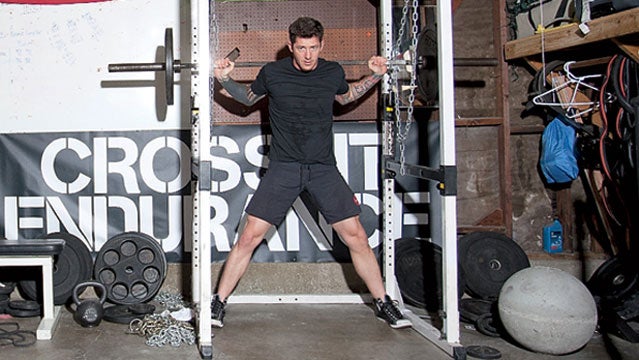Ah, the pursuit of beach muscles, six-pack abs, and sculpted buttocks. Thankfully, real fitness, the functional kind, almost always improves while people pursue the goal of looking better. Getting ripped is a function of improving body composition; losing fat mass while retaining or increasing lean body mass. There are innumerable ways to get this done, as long as you understand the difference between myth and fact.
Rip Off Myths
1. More crunches = ripped abs: Everyone has a six-pack, it just can’t be seen unless you remove the layer of fat covering it. Crunches can further develop this muscle group, and are great for building core stability, but a few sets of crunches won’t burn enough calories to significantly impact fat burning. What’s more, there’s no such thing as spot-reducing; you can’t specifically burn the fat from your abdomen. It comes off as it went on, gradually and all over.
2. Keep intensity low to burn more fat: Low-intensity exercise is fueled by a higher percentage of fat than carbohydrate, but the overall amount of energy and fat burned is still low. Great, 60 percent of your energy is coming from fat, but you’re only burning a few hundred calories an hour. Boosting the intensity to just a moderate and steady effort can double the total calories and the absolute amount of fat burned in an hour. Don’t be fooled by the percentages, it’s all about the grams.
Get Ripped Facts and Tips
Get Off the Machines
If you’re using strength training to maintain and increase muscle mass, learn to use free weights and get off the machines. What’s the use of exercising a muscle in isolation when you don’t use it in isolation? Exercising with free weights requires balance and coordination, and that translates to work for a wide variety of muscles throughout the body. The more muscles you engage, the more you develop.
Focus on Multijoint Movements
I’m talking about your hip, knee, shoulder, and elbow joints. Resistance-training movements that involve multiple joints are more effective for gaining strength and retaining muscle mass. These don’t have to be limited to weight lifting, either. You can do a squat or lunge with weights, or you can do a plyometric exercise of bounding up onto a raised step. Any of these exercises involve the knee and hip, and the plyometric exercise typically involves swinging the arms as well. Again, the more muscles you engage with any particular exercise, the more energy you will burn and the more lean muscle mass you will support.
Start Training Hungry
Many of us have to train in the late afternoon or evening after work, and there is a tendency to eat more heavily during the day when you’re anticipating a late ride or run. However, most of these workouts are 60-90 minutes in length, so you really don’t need a huge amount of fuel for them. Try to avoid overcompensating with calories during the day, have your last big meal 2-3 hours before training and small (200-250 calorie) snack in the hour before training. Start the workout a little hungrier than normal, and consume 120-240 calories per hour of carbohydrate (30-60 grams) during the workout. You’ll tend to eat less during the workout than you normally overcompensated with prior to it, but you’ll still have the energy to complete a quality workout.


